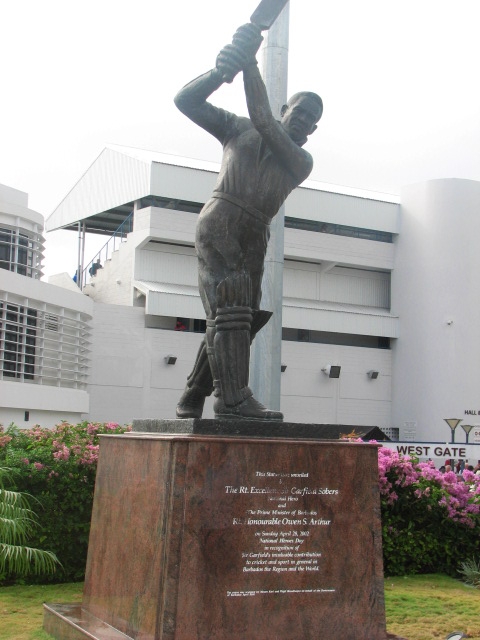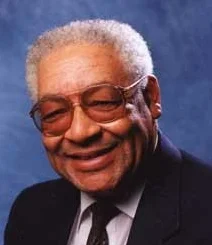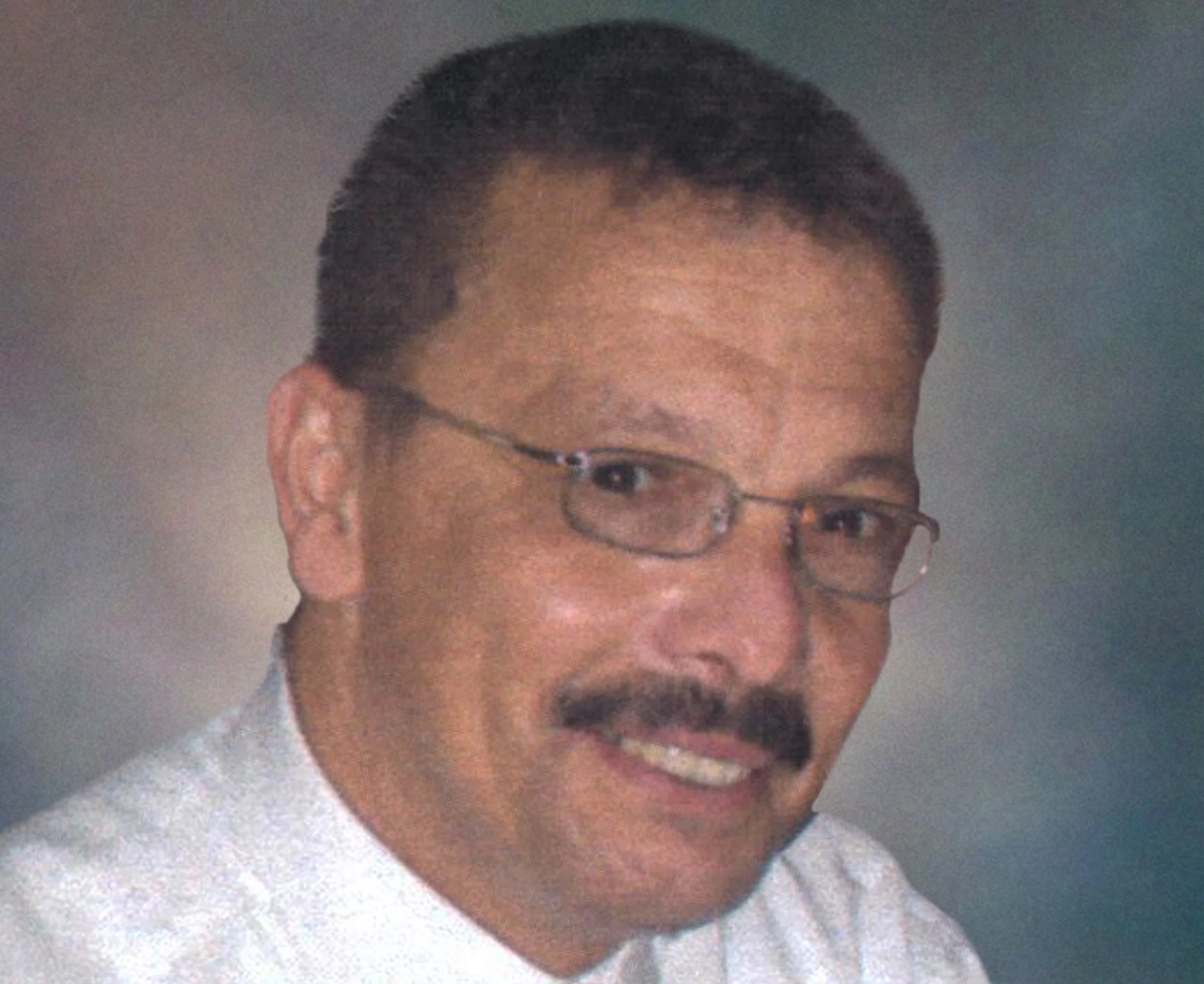Sobers entered rare air with triple century 60 years ago
March 8, 2018
Before passing away in 2001, Franklin ‘Dickie” Martin -- in his very lively cricket discussions at grounds across the Greater Toronto Area -- maintained that Sir Garfield Sobers was the only person other than stylish businessman Colonel Sanders who should wear all-white outfits.
A co-founder of Kentucky Fried Chicken, Sanders wore iconic white suits everywhere he went.
Sobers, on the other hand, is considered cricket’s greatest all-rounder and Martin – who migrated from Jamaica -- seized every opportunity to remind his audience that his idol was royalty.
Sixty years ago at the beginning of March, Sobers became the first West Indian batsman to score a triple century in Test cricket.
For two decades, Len Hutton’s 364 against Australia at the Oval was the highest individual score until Sobers broke the record against Pakistan in Jamaica. It was his first three-figure score in his 15th Test since his 1954 debut against England.
“I don’t mind admitting I was becoming a little anxious about it, not so much on my own account but because there were those who kept wondering if I really would fulfill my potential as a batsman at the Test level,” he said in ‘Gary Sobers’ Most Memorable Matches’ written by the late Tony Cozier.
Prior to the third Test at Sabina Park, Sobers scored an unbeaten 183 for Barbados against the tourists and three half-centuries in the first two Tests.
“When we went to Jamaica for the third Test, I was more determined than ever to make a big score,” he said. “The Pakistanis had two good new ball bowlers in the great Fazal Mahmood, who wobbled the ball around and seldom bowled a bad ball, and a big fast-medium trundler by the name of Khan Mohammad. But it was hardly a devilish attack and, on the hard and fast pitch at Sabina Park, I said to myself, ‘It’s now or never’.”
Sobers went in to bat on the second afternoon after Pakistan was dismissed for 328.
Rohan Kanhai, who opened the innings with the late Conrad Hunte who recorded a century in his first Test in the series at Kensington Oval, lost his wicket for 25 with the score at 87.
“I was the number three in that series and someone up there seemed to have ordained that this was to be a batting feast for anyone who wanted to partake,” he noted. “The pitch, as usual, was a beauty. What is more is that by the time I came in, Mahmood Hussain had so badly torn a muscle in the very first over of the match that he didn’t bowl another ball on the tour and soon the left-arm spinner Nasim-ul-Ghani cracked his left thumb and was off the field as well after 14 overs. This was one opportunity I wasn’t going to let go.”
At close of play on the third day of the six-day Test, Sobers was on 226 and well set to make history.
“For the first time in my life, I spent a restless night,” he said. “At the end of a day’s play, before and since, I count myself lucky that I completely relax and put the cricket out of my mind until we start again. Perhaps, this time, with the intense concentration, the elation of my first Test century and just possibly the talk of records which was going around, I found myself tossing and turning in my hotel bed that night.”
Sobers and Hunte put on 446 for the second wicket which was just five runs short of the record partnership for any wicket at the time set in 1938 by Don Bradman and Bill Ponsford against England at the Sydney Cricket Ground.
Sri Lankans Mahela Jayawardene and Kumar Sangakkara hold the record of 624 set 12 years ago against South Africa in Colombo.
With Sobers just one run shy of setting the record, opening batsman Hanif Mohammad – who in the first Test had played the longest innings in Test history, scoring 337 in 970 minutes – decided to have a rare bowl.
Previously, Mohammad had bowled just one over with his right hand. With Sobers on the edge of making history, he chose to bowl with his left hand.
“You can bowl with both hands if you like,” Sobers, then 21, told him.
He pushed the first ball into the covers for a single to reach the landmark 365 in 674 minutes with 38 boundaries.
“In a split second, the place was pure bedlam,” Sobers recalled. “The crowd streamed across the ground and lifted me in the air, and, for a time, I was on cloud nine -- almost literally.”
The day’s play was called off an hour early because the crowd damaged the pitch during the celebration.
Sir Garfield Sobers statue outside Kensington Oval in Barbados
Brian Lara (375), Chris Gayle (317 and 333) and Lawrence Rowe (302) are the only other West Indian batsmen to register triple centuries in Test cricket. Lara stands alone as the only cricketer to attain the 400-run mark, achieving the feat against England in Antigua in 2004.
In 93 Tests, 87 of them played consecutively, Sobers – who led the West Indies from 1965 to 1973 – accumulated 8,032 runs at an average of 57.78. Bowling medium pace, slow orthodox and unorthodox spin, he picked up 235 wickets at an average of 34.03.
He was also a brilliant close-to-the-wicket fielder, snaring 110 catches.
While in Toronto in 1992 for the Ontario Cricket Association inaugural awards ceremony, Sobers shared some of his thoughts on the game.
Asked why he never used any protective gear while batting, he said it would have hurt his pride.
“I believe that a cricketer should be good enough to use his bat to protect himself,” Sobers said. “If that individual feels he’s not good enough to do that, he shouldn’t be playing the game. At the same time, I don’t hold anything against the cricketers because of the rich rewards they are reaping. This has been long overdue.”
Heavily criticized for the declaration he made in 1968 against England, giving the visitors 215 to win in 165 minutes, Sobers said he would do it again.
“Many of the so-called experts failed to consider many facts,” he pointed out. “Wicketkeeper Deryck Murray dropped John Edrich off the second ball I bowled. Had that catch being taken, I am convinced England would not have gone after the target. Secondly, England bowled just 12 overs an hour during that series, mainly with their spinners. In the Port-of-Spain Test, we bowled 16 overs an hour and lost with about three balls to bowl. If I wanted to play for a draw, I could have slowed the over-rate down by bowling just one over less.”
Sobers, now 81, said he never understood why his private life was closely monitored even though he performed consistently at a very high on the cricket field.
“I was never a person who could go to bed early,” he said. “When I started playing cricket, it was even more difficult for me to sleep after a match. I would usually lie in bed and try to visualize the game. The next day, I would go out and fail. Late nights were my motivation.”
Based on his outstanding accomplishments, very few would disagree.







